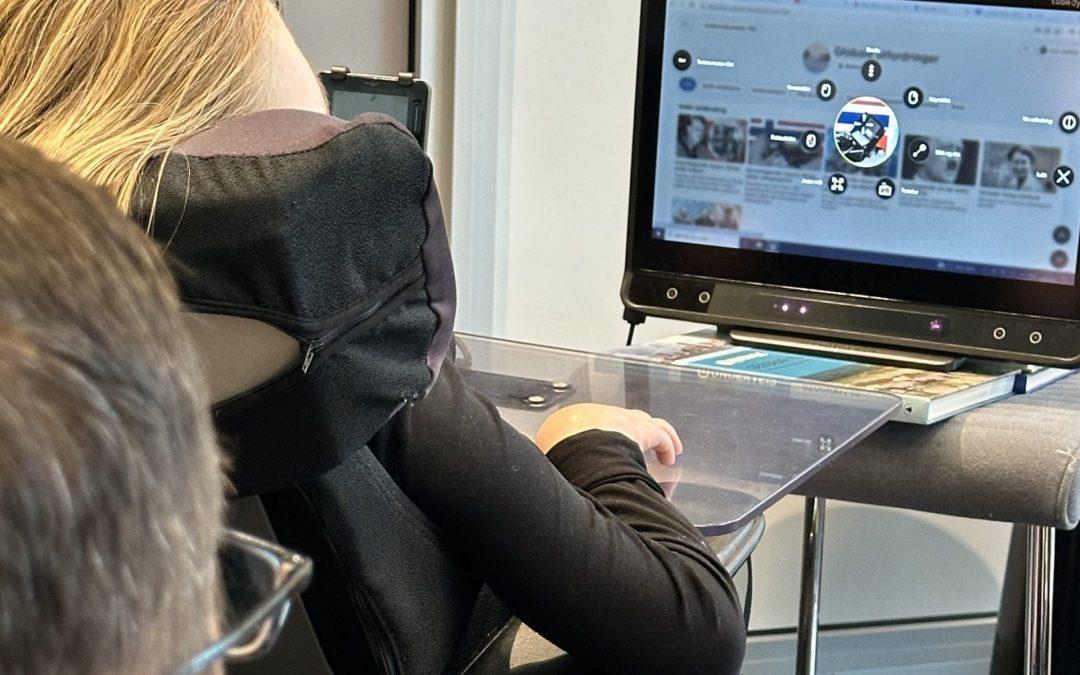How to advance accessibility of digital learning and media platforms
One fits one, not all. Around 50 researchers, PhDs and industry experts gathered on September 16. and 17. in Oslo to foster development of accessibility of digital learning and media platforms.

by Janina Wildermuth | Sep 26, 2024,
Around 50 researchers, PhDs and industry experts gathered on September 16. and 17. in Oslo to foster development of accessibility of digital learning and media platforms. Together with Schibsted Media and TV 2 Skole, MediaFutures WP4 for Media Content Interaction & Accessibility organised a workshop funded by COST Action on Media Accessibility (LEAD-ME) to bring together users with digital needs and researchers.
“We want to wake people up”, explains Managing Director of TV 2 Skole, Yngvar C. A. Nordberg.
He is the daily manager of the learning platform elevkanalen.no and the organisation Digjobb.no. Both were the basis of the workshop, facilitating authentic users of digital learning tools and a platform to test them.
One fits one, not all
Among the 12 experts present, one principle stood out: there is no one-size-fits-all solution for digital accessibility. Every user has unique needs, requiring different methods to navigate digital platforms. To demonstrate this principle, TV 2 Skole invited five users, each employing various tools to access the internet, demonstrating the diversity of accessibility needs.
Amongst them was Thea, half blind, who still goes to school. She relies mainly on zoom to navigate, but often also uses text-to-speech technology which she prefers to have an increased speech speed to follow along.

“I get easily bored when the voice reading the text is too slow. I need it to be really fast,” Thea shared with a group of PhD candidates and industry observers.
Another user introduced to the group was Emil, who is blind and uses both a braille display and a laptop keyboard for web navigation. Braille is a tactile writing system used by people who are visually impaired. A screen reader helps him interpret content on the screen, but he pointed out significant shortcomings with picture descriptions.
“When you’re blind, you don’t know how a normal shark looks. A good description would be, ‘Here we can see a man with a white shirt.’ But just saying, ‘Here we see a man’ isn’t helpful,” Emil explained to the PhDs.
User testing is always necessary
While the PhD students were already familiar with accessibility issues, the hands-on demonstrations made a strong impact. Iga Szwoch, a PhD candidate from SWPS University in Poland, was especially intrigued by the Braille tactile system, noting that she hadn’t known it could be used for writing.
“I learn a lot here and get inspired on how to use it for my work”.
Puneet Jain, a PhD candidate from Zurich University of the Arts and Concordia University in Canada, echoed this sentiment, highlighting the value of observing how these tools are used in everyday life.
“It was quite interesting to see how these new tools actually are used in daily life and where they still have issues or restrictions”, he said.
It has not been enough done
Daniel Gloppestad Bajer, UX Designer at TV 2 Skole and one of the workshop’s organizers, explained how elevkanalen operates as a platform for educational content. He emphasized the importance of user-centered design in their work.
“Digjobb complements the educational content on our platform by providing user testing and focusing on practical, user-driven tasks. The link to real users is crucial,” Daniel said.

He expressed his appreciation for the insights provided by the researchers, noting that their perspectives are invaluable in improving the platform. His goal is to engage key actors in the field—those with the influence and audience to effect real change.
Yngvar Nordberg also underscored the workshop’s importance. “Many companies lack universal design in their platforms,” he explained. As a result, TV2Skole is often approached to collaborate, leading to broader content sharing on Elevkanalen.
“We have a 70% market share and are known for taking user testing seriously,” Nordberg added.
The year 2023 was ground zero for content that is accessible. Many companies had to pay high sums for having not accessible content online and needed to remove it. While Nordberg wishes the issue received more attention, he acknowledges that it remains under-prioritized by many organizations, including the government.
Keynote speaker Jan Beniamin Kwiek from The Norwegian Digitalisation Agency (Digdir) highlighted the challenges authorities face in addressing accessibility.
“We lose more money by not improving accessibility than we would by investing in it. But we won’t succeed without a major company developing AI-driven tools to tackle these issues,” he stressed.

Persistent Challenges for the Blind
One of the ongoing difficulties for blind users is the inability to access screenshots via screen readers.
“Emojis and memes often have descriptions I can use, but the reader needs frequent updates. Sometimes it stops working altogether because something has changed,” explained Torbjørn, one of the workshop participants.
Torbjørn uses earphones during meetings to avoid disturbing others when the text is read aloud to him. While he’s grateful for AI-generated descriptions, he wishes he could get more direct image descriptions.
“My first teacher told me I’m lucky to be blind now rather than earlier when technology wasn’t as advanced,” he shared.

Puneet Jain was impressed by the positive attitude toward new technology in Norway. “Back home, many tools aren’t accepted,” he noted.
Thea, who uses assistive tools in the classroom, explained that she often has to fight with authorities to access these tools. “The tools are there, but it’s up to you to find them and figure out how they work. There are many kids who could benefit, but they or their parents just don’t know.”
While Thea has found solutions for now, she admits, “There might be better tools out there, but I haven’t found them yet. For now, I’m using these glasses.”
Original article from Mediafutures.
Link to full program of the workshop.
Link to COST Action on Media Accessibility (LEAD-ME).
